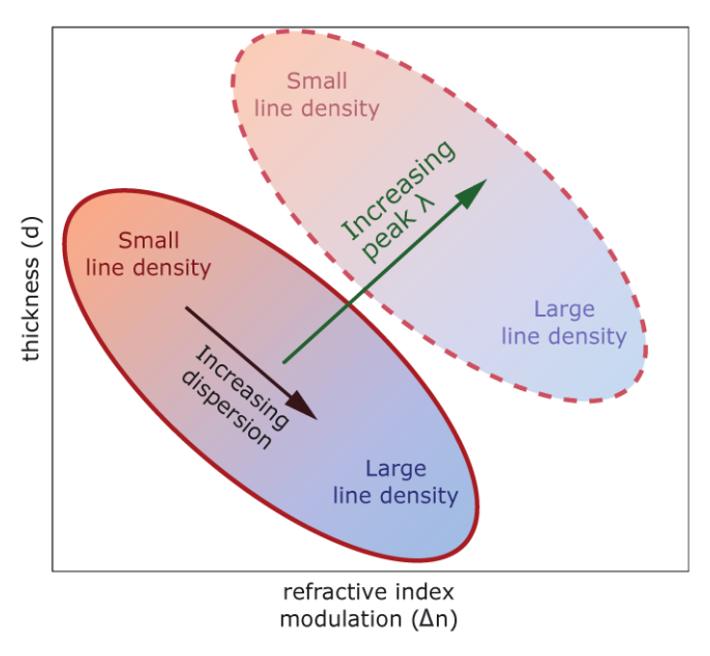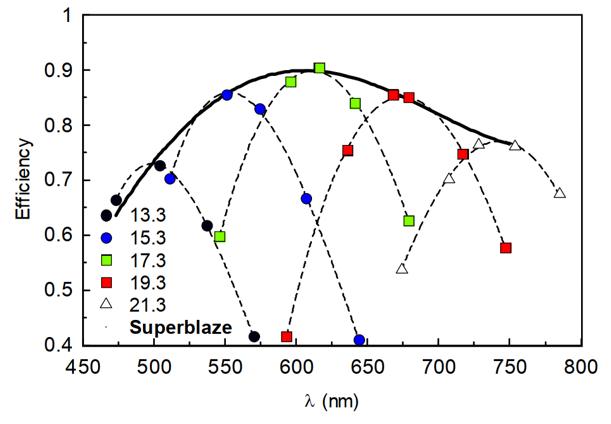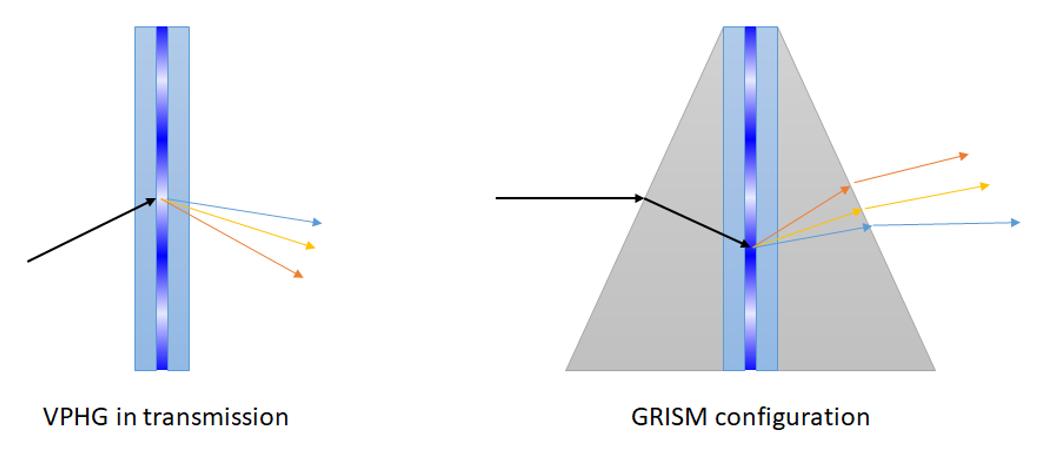VPHGs work thanks to a periodic modulation of the refractive index (Δn) stored in a holographic material with a defined thickness (d).

The periodic modulation is induced by means of a two laser beams interference pattern that promotes a localized photoreaction. Looking at the diffraction efficiency of the VPHGs (in the case of pure phase gratings), it depends mainly on:
- Film thickness (d);
- Refractive index modulation (Δn);
For high dispersion gratings (high values of line density, G), the large peak efficiency and bandwidth is achieved by maximize the Δn and minimize the film thickness d.
For low dispersion gratings (low values of line density, G), if we increase the refractive index modulation too much, the light will be sent more and more in different diffraction orders.
Consequently, the optimization of the efficiency by choosing d and Δn will follow different paths depending on the features of the grating and the required spectral response.

Once you have chosen the parameters, the VPHG provides a diffraction efficiency curve (blaze curve) that is peaked at the Bragg angle (angle of incidence, AOI, equal to the diffraction angle). Moreover, the blaze curve can be tuned in wavelength by changing the incidence angle obtaining the superblaze curve.

The VPHG can be used in transmission alone or coupled with prisms in a GRISM configuration. The former is the classical use of diffraction gratings; the latter is suitable for instruments capable of both imaging and spectroscopy, such as focal reducers.
